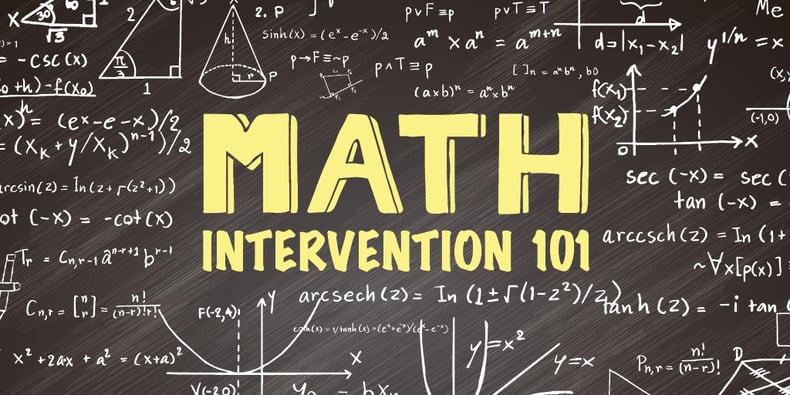Response to Intervention (RTI) helps to support all students within a school. It is a systematic approach to meeting the needs of all children. Instead of individual teachers in individual classrooms working to help students, the entire school system works as a whole to help all of the students. Here is an overview of how to think about Response to Intervention.
When it comes to RTI for reading and language arts, there are plenty of resources and research-based practices for schools to use. As far as math goes, this isn’t necessarily the case.
Intervening at the School-Wide Level
There are some math resources available, and more are being researched and developed all the time. Here are some of the adaptive online math programs currently available, which are great for differentiation. These are a good starting point for a tool to use for an intervention. But when it comes to creating a school-wide system, an adaptive program is not enough.
Here are some ideas for how a school can get started and the approaches they should take to successfully implement a school-wide math intervention program:
- Start by screening all students: Screening tools are short assessments designed to bluntly group students and determine which students may need more testing. These assessments are not designed to give deep information about a student's learning. Rather, these tests give us an indication of which students may not be at grade level so we can do further diagnostic assessments.
A few examples of screening tools that you could use for math would be DIBELS Math, aimsweb, iSTEEP, or NWEA’s MAP Suite. Even some of the adaptive math apps mentioned above have beginning benchmark screeners for each grade level. - Diagnose the help a student needs: For our school, this has been one of the hardest parts of developing a math intervention program. The reason math is harder than reading when it comes to RTI is that math doesn’t have the straightforward progression that reading does. In reading, students move from phonics to fluency, then to comprehension. In math, it doesn’t work as directly. A student strong in number sense may be weak in geometry, while a student strong in algebraic concepts may be weak in statistics and probability. There isn’t the same linear progression between the skills.
Even so, there is a way to diagnose students in their lowest domain. Again, some of the adaptive math programs do this, but keeping up with this individualization for all students is nearly impossible. We have used Math-U-See, aimsweb, and NWEA to help us break down the weakest area for a student to know where support is needed. These are not diagnostic tests in the traditional sense, but as part of the process, your school can research other great tests that you may find. - Select interventions for students: To intervene with students, practicing fact fluency at every level is essential. Fact fluency is equivalent to reading fluency, and without being fluent, it is hard to apply skills or comprehend the learning. Beyond fluency, students require a small group intervention based on their specific needs. The intervention can look different depending on the age and the level, but using a Concrete-Representational-Abstract strategy is highly effective with students who are struggling with concepts.
- Monitor progress: Progress monitoring is essential for knowing which students are making progress with the intervention. These tools are used to systematically, and frequently, assess students’ progression toward a learning objective. To know if the intervention is working, it is essential to collect data about the progress. These could be self-made assessments that are given about the skill being taught. Some of the testing systems, such as DIBELS and aimsweb, have progress monitoring assessments built into the screening system.
- Enrich and challenge students who need it: What about the students who didn’t screen below grade level? What do these students need? We have found that most of the time, these students need application-level practice of math concepts. These can be enrichment projects, project-based learning, or challenge projects. At our school, we have tried to tie the projects to a common domain or math theme.
- Test again for growth: Because the approach to RTI is a system approach, it’s important to monitor data from the macro view. After a few months of intervention, all students should be screened again to see if, overall, there is growth taking place across the grade levels.
These are some broad concepts for getting started with a math intervention program for your school. It can take a lot of time and planning to put it all in place—and the assessments, adaptive programs, and interventions can be costly. When looking at screening data from the beginning of the year to the end, I am convinced that it is a great way to help all students grow in math.
Looking for more teaching tips, tools, and the latest information in education? Be sure to subscribe to the Mimio Educator blog today!




